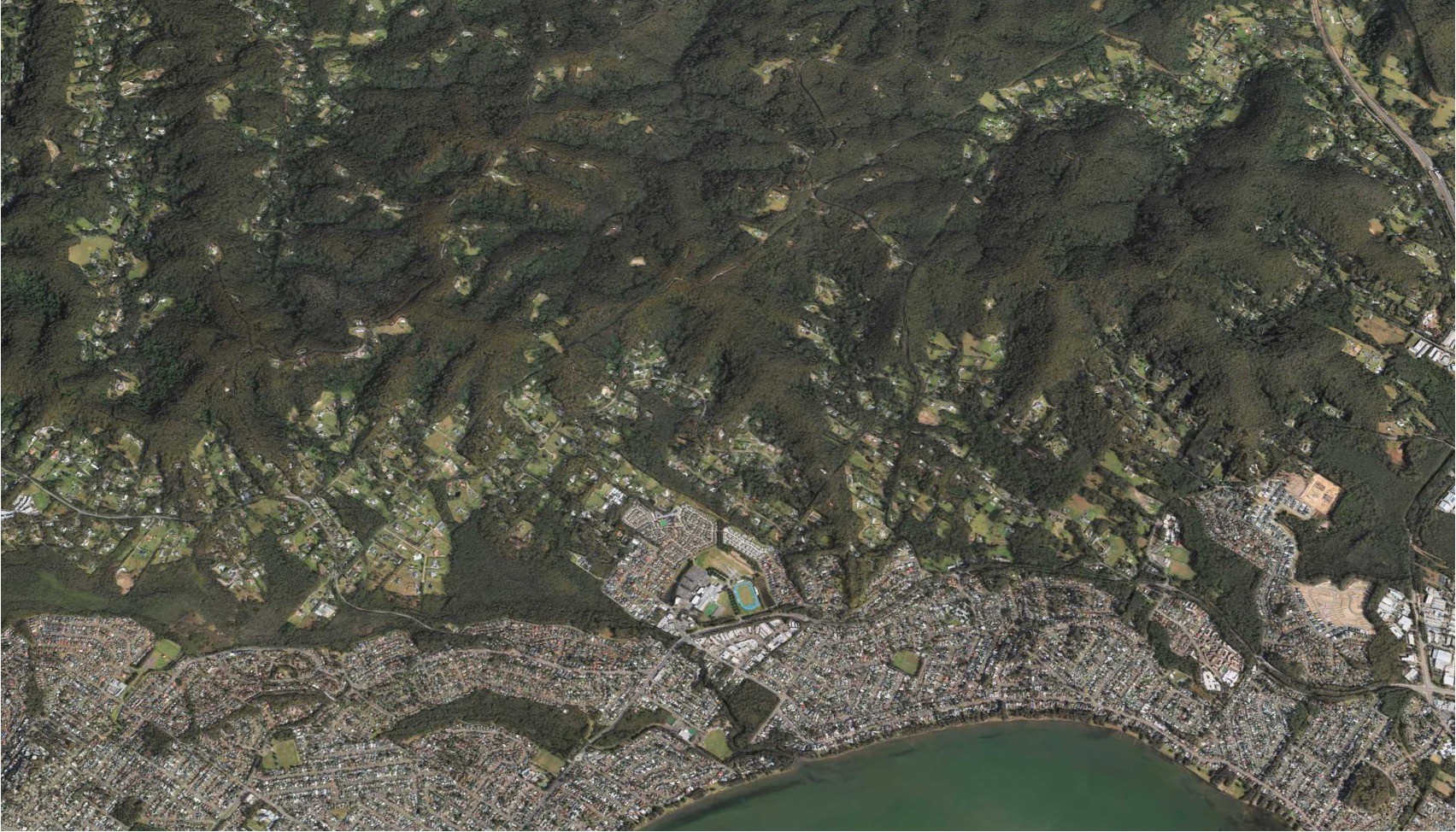
The Local Environmental Plan that the Central Coast Council uses to zone and manage land is flawed, not fit-for-purpose and incapable of protecting the region’s biodiversity, cultural heritage or unique visual character, according to a comprehensive scoping report prepared by the Community Environment Network (CEN).
The Scoping Report, which calls for amendments to the Central Coast Local Environmental Plan 2022 (CCLEP2022), is an expansion of CEN’s 2024 The Coast Needs a Better Plan initiative.
Last year CEN called on the NSW Planning Minister, Paul Scully, to reject the Deferred Matters Planning Proposal that could’ve destroyed at least 3770 Ha of bushland and introduce intensive and commercial land uses into high conservation zoned land.
The Deferred Matters Planning Proposal has NOT yet been signed off by Minister Scully.
CEN Chair, Gary Chestnut, said CEN’s new scoping report identifies over 8,350 Ha of land that contains mapped Endangered Ecological Communities (EECs) and steep land, that is not protected by the C2 Zone in the CCLEP2022. There has also been no consideration for the protection of any cultural or aesthetic values across the landscape.
“This oversight represents a fundamental failure in environmental stewardship and is inconsistent with principles of strategic and evidence-based planning,” he said.
“Urgent corrective action is necessary to address these deficiencies and ensure the adequate protection of these ecologically, scientific, cultural and aesthetic significant areas.
“The failure to uphold rigorous, evidence-based decision-making has resulted in a compromised planning framework, threatening the integrity of conservation efforts and undermined the region’s environmental sustainability.”
Mr Chestnut said the conservation zoning “mess” in the CCLEP2022 is directly due to the conflicting interpretation and application of environmental/conservation zones by the former Gosford City and Wyong Shire Councils.
“The inappropriate zoning of high conservation land to C3 instead of C2 has occurred because the former Wyong Shire Council’s approach to managing high-conservation-value land was fundamentally flawed and, at worst, professionally negligent.
“This raises serious concerns regarding past decision-making processes which appear to have deliberately disregarded environmental protection and compromised transparency in governance.”
According to Mr Chestnut, there may even be Old Growth Forest in areas of the former Wyong Shire west of the M1 that should be zoned C2, the highest level of protection available outside a national park, but have been zoned C3, which allows land clearing with offsets.
“And we know the NSW offsetting system is also currently failing to protect conservation land,” he said.
“Central Coast Council has repeated past environmental planning failures thus placing the entire region’s conservation efforts at significant risk. The failure to protect high-value environmental land is not merely an oversight, it is a systemic issue that reflects a troubling pattern of flawed decision-making.
“Such an approach is devoid of transparency, accountability, and adherence to best-practice land-use planning. It undermines public trust and sacrifices the long-term environmental, social, and economic well-being of the Central Coast.”
Mr Chestnut said copies of the Scoping Report and recommendations to “fix the mess” have been sent to relevant NSW Ministers, all 15 elected councillors, and the council’s Director of Environment and Planning.
“We are seeking the rezoning of those 8,350Ha from C3 to the higher and more protective C2 to ensure the protection of all high-value ecological, scientific, cultural and aesthetic attributes located on land within the former Wyong Shire local government area.
“As we said in 2024, the Central Coast deserves a better plan. We were promised a brand-new comprehensive Local Environmental Plan as part of the amalgamation of our two former councils and that happened nine years ago.
“Our proposal would align the region’s conservation zones with contemporary biodiversity conservation and sustainability goals in accordance with the objectives of the Environmental Planning and Assessment Act 1979 and Department of Planning guidelines.
“The Scoping Report also calls for Mr Scully to officially reject the Deferred Matters Planning Proposal.
“The current L-E-P is a D-U-D!”

The Community Environment Network (CEN) was formed in 1997 with the mission of supporting and advising local environmental and community groups and individuals across the Central Coast. We are non-political and not-for-profit.
FM Building
Central Coast Campus
University of Newcastle
Loop Road
Ourimbah NSW, 2258
Copyright 2024 Community Environment Network | Privacy Policy